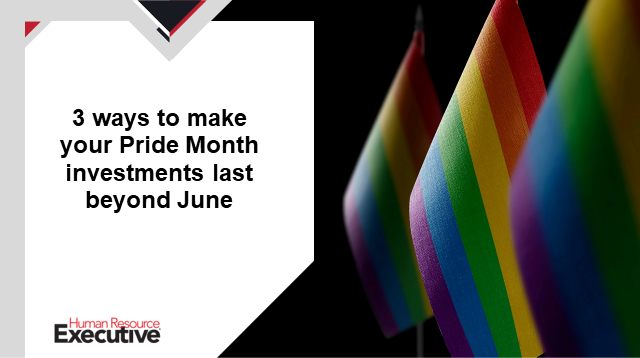“I am a story. So are you. So is everyone. If enough of these stories are told, we will begin to see that our lives are the same story.” – Julius Lester
First, the good news—leaders and organizations are engaging, seriously and deeply, with the challenges of diversity, equity and inclusion (DEI).
The problem is, though, that too many of us are myopic. We are focusing too much on formal DEI structures and systems—the strong suit and the comfort zone of any organization. We are not focusing enough on diversity stories. Those stories are essential to any diversity program. They are the informal emotional drivers that make people feel at home, truly free to be themselves and to deliver the best of themselves to the organization.
There are three pillars of DEI. We are good at two of them.
DEI initiatives are supported by:
- Recruitment efforts, retention programs and mechanisms for evaluation, training and promotion, along with their supporting metrics.
- Spaces—the everyday activities where the results of a DEI program can be seen and help it flourish. Spaces can be protected—for example, employee affinity groups—but also include the meetings, working groups and departments where a diverse workforce can contribute.
- Stories are the essential emotional layer of diversity—the trove of personal experiences, history and identity that make us uniquely who we are. Stories create an environment of inclusion and belonging. They set a table where everyone feels at home.
Diversity stories create safe spaces—and let your people bring more of themselves to work.
Everyone has their diversity story.
By that, I mean that everyone has had their moment in time when they were an outsider.
By sharing and understanding each other’s diversity stories, we help people realize they’re in a safe space—where they don’t feel they need to create guardrails and where it’s possible to bring your whole self to work.
Only when that happens do we get the full benefit of diversity—the wider range of viewpoints around the table, the ability to connect better with a wider array of customers, the ability to mount challenges to groupthink, thereby arriving at better strategies and decisions.
There was a colleague I began my career with—a Black woman. As she started out, she was intent on blending in and adopted a more white, Caucasian hairstyle. But at a point, she decided to tell her story, which was about adopting a style that was not authentically her. And then she made a change to natural hair—and openly shared the “why.” In a professional firm that was predominantly white, her story and her action educated many—about culture, about norms and about showing up as your true self. This does not happen nearly enough. Data from 2013 show that up to 79% of Black employees adopt some form of cover.
More of your people than you realize have diversity stories to tell.
We all have diversity stories—and diversity is not always visible. I remember a senior leader—a man in his 50s—who had never shared that he was Jewish. His faith and culture mattered greatly to him, but he couldn’t draw on that—on who he fundamentally was—in his leadership role. Similarly, when I started my career, I never came out at work. I too was fearful of sharing my story and that I would stand out in some way that wouldn’t be acceptable.
The executive and I were not fully present—but would have been if we had been able to tell our stories in full.
Some organizations excel at diversity storytelling.
Storytelling lies outside the comfort zone of many organizations—but some excel at it.
- Gillette used the power of its brand and advertising dollars to start a conversation on toxic masculinity, using the brand’s 30-year-old slogan, “The Best a Man Can Get.” Through the power of digital storytelling, the company was able to show how men can do better—standing up to bullies, creating safe spaces and intervening instead of standing by. The resulting video generated 40 million views and sparked a robust online conversation.
- Oscar Health, an insurer, sees diversity and inclusion as fundamental to reaching the communities it is trying to serve. “Differences strengthen us” is one of the company’s values and is at the heart of its storytelling culture. Oscar launched the #FacesOfOscar social media campaign that shares employee perspectives, experiences and stories to raise awareness about the importance of DEI and belonging. Oscar Health is one of the most diverse insurance companies, achieving a majority-BIPOC and female workforce in 2020.
Research backs up the value of storytelling and its impact on diversity initiatives. Studies show that stories are six to 12 times more memorable than facts alone. A University of Arkansas study, sponsored by Walmart during my time there, found that, if you had a direct relationship—family, friend, neighbor, co-worker—with an LGBTQ+ person, your views about same-sex marriage, right to work and right to adopt were far more positive. Sharing and connection led to inclusion and a healthier community dynamic.
Pragmatic steps can help your organization tell better stories—and become a more effective workplace.
How best to incorporate storytelling into diversity programs? There are pragmatic steps to take:
- Tell diversity stories at the top. Leaders should tell and model diversity stories. Where there is a chief diversity officer—an increasingly popular position—that person can serve as the chief DEI storytelling coach. Ultimately, storytelling needs to be part of the fabric of the organization.
- Make diversity storytelling integral to recruiting, retention and succession. Storytelling encouragement should be part of entry-level recruiting, lateral hiring, promotion and succession. If people are encouraged to tell their diversity stories in their first encounters with the organization and at inflection points in their careers, they will be more likely to share their stories on an ongoing basis—changing the culture in the process. Role modeling is key—newcomers prefer to hear stories from their peers, not just from leaders.
- Reward diversity storytelling—and reap the benefits—throughout the ranks. Push diversity and responsibility throughout the organization. Every year, the CFO leads a strategic review of the financial plan. Use the committees and task forces around that initiative to expose up-and-coming, diverse talent to the process. By making it pervasive, diversity becomes part of our culture—integral to how we pick our vendors, measure and think about our business results and engage in communities.
Taking those steps brings us all the way to the “why” behind diversity and inclusion. We achieve better rapport, better communication and better products, service and solutions, all because our people can be who they are. That is the business value of DEI, and stories are the way to get there.
The post Why we need to tell diversity stories to achieve sustainable DEI success appeared first on HR Executive.